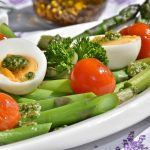Hello and welcome to Healthy Diet Balance, your global companion in the realm of nutrition! If you are confused between healthy food and junk food and you want to make the right choices to live a healthy life, this guide is perfect for you.
we will look at the science and the benefits, and practical strategies to manage these choices, based on your preferences.
Why the Choice Between Healthy Food and Junk Food Matters
The fight between healthy food and junk food affects your energy levels, health and overall longevity.
It is reported by the World Health Organization (WHO) states that poor diets, typically dominated by junk food can cause up to the deaths of 11 million people each year including 1.7 million of them due to a lack of intake of vegetables and fruits.
For people, this decision can affect mood, weight and risk of chronic illness which makes it a world-wide issue.
Being aware of the difference allows you to create the right diet for your preferences, whether working full-time or a concerned parent.
The Global Context of Food Choices
from fast food chains across America to fast-food chains in the U.S. to street food in Asia junk food’s access is in sharp contrast to the varied and nutritious options available in healthy foods around the world.
This guide helps bridge that gap by providing an unbiased perspective that is specific to your tastes.
Engaging Start: Your Food Journey
Imagine a day that is full of the energy of healthy food or an eerie moment of regret following an unhealthy food coma–which one do you prefer?
Let us know about your struggles with food in the comments and let’s talk about it!
The Science Behind Healthy Food and Junk Food
To make informed choices to make informed decisions,
let’s explore the science that differentiates healthy food and junk food by drawing on research from the National Institutes of Health (NIH) as well as other authorities around the world.
Defining Healthy Food
Whole foods that are minimally processed and high in nutrients.
- Nutritional elements: Vitamins (e.g., Vitamin C from oranges) minerals (e.g. iron, for instance, from spinach) as well as fiber (e.g. oatmeal, oats).
- Benefits: Helps to boost digestion, immunity, and long-term health.
- Examples: such as salmon, Quinoa as well as broccoli and almonds.
Defining Junk Food
Junk food is extremely processed, and is high in sugar, calories salt, and unhealthful fats. It has a the lowest nutritional value
- Components: Trans-fats (e.g. and fried foods) and refined sugars (e.g. sodas, etc.) as well as artificial additives.
- Risks: are linked to diabetes, obesity, and cardiovascular disease according to 2023 American Journal of Clinical Nutrition study.
- Examples: Potato chips and burgers, candy and sweet drinks.
How They Affect Your Body
- Healthy Food: It stabilizes blood sugar, decreases inflammation, and promotes gut health by providing prebiotics.
- junk food: The food spikes insulin levels and visceral fat and disturbs the gut microbiome, as stated in the WHO.
Caloric and Nutritional Comparison
A healthy 500-calorie meal (e.g. Grilled chicken with vegetables) provides 20-30g of protein and 10g fiber, while a 500 calorie junk food (e.g. pizza) could provide 5g of protein,
But only a small amount of fiber, which highlights the difference in quality.
Key Benefits of Choosing Healthy Food Over Junk Food
The transition from junk food to healthier food improves your health and well-being. confirmed by research:
- weight management: A healthy diet can reduce the risk of obesity up to 25 percent, according to the NIH.
- Disease Prevention: A healthy diet reduces the risk of heart disease by 20%, and diabetes by 30 percent (CDC).
- mental clarity: Whole foods high in omega-3s can improve your mood, according to the findings of an European Journal of Nutrition study.
- Life expectancy: Mediterranean diets, the most healthy model of food increase by 2-3 years the life expectancy (WHO).
The Downside of Junk Food
- Short-Term: The energy system crashes and causes the bloating can occur within hours.
- Long-Term: Increases the risk of developing cancer by 10% with regular use (World Cancer Research Fund).

How to Balance Healthy Food and Junk Food in Your Diet
Finding balance between healthy food and junk food is essential to ensuring sustainability.
Step 1: Assess Your Lifestyle
- Goals: Weight loss or maintenance, or perhaps an occasional indulgence?
- Preferences: Love pizza? Combine the pizza with salad for bring balance.
- Consultation: for a consultation with a nutritionist to customize.
Step 2: Build a Balanced Approach
- The 80/20 rule Goal: eat 80percent of healthy foods (e.g. fruits and protein sources that are lean) in addition to 20% of junk food (e.g. treats, sweets) to allow for the flexibility.
- Limitation of Portion: Limit junk food to 200-300 calories per portion.
- Timing: You can enjoy junk as a reward for a few times but not a regular habit.
Step 3: Plan Your Meals
- Breakfast (400-500 kcal): Oatmeal with fruits (healthy).
- lunch (600-800 calories): Grilled fish with quinoa, vegetables and quinoa (healthy).
- DINNER (500-700 calories): Veggie stir-fry or a small burger served with salad (balanced).
- Snack (150-250 kcal): Nuts or small chocolate bars (mixed).
Step 4: Stay Mindful
- Drink 2-3 liters of water every day (Institute of Medicine).
- Combine exercise and junk food to reduce calories.
7-Day Meal Plan Balancing Healthy Food and Junk Food
This is a unique healthy and nutritious food along with junk food plan that blends international tastes. Calorie counts are estimates.
Day 1
- Breakfast: Greek yogurt with walnuts and honey (400 calories, nutritious).
- Lunch: Grilled salmon brown rice and spinach (700 calories, nutritious).
- Dinner: Pizza slice with salad (600 calories well balanced).
- Snack: Apple (100 kcal, healthy).
Day 2
- Breakfast: Smoothie made with banana and spinach (450 calories, nutritious).
- lunch: Chickpea curry with Quinoa (750 kcal, a healthy).
- Dinner: Fried chicken and cooked vegetables (650 calories and balanced).
- Snack: Dark chocolate (150 Kcal junk).
Day 3
- Breakfast: Eggs scrambled with avocado (400 calories, healthy).
- Lunch: Turkey wrap with Hummus (700 calories, nutritious).
- Dinner: Burger served and sweet potato fries (600 calories healthy).
- Snack: Carrot sticks (120 kcal, healthy).
Day 4
- Breakfast: Oatmeal with almonds (450 kcal, good for you).
- Lunch: Fish baked with the couscous (750 calories, healthful).
- Dinner: Nachos and Guacamole (650 calories and balanced).
- Snack: Orange (100 kcal, healthy).
Day 5
- Breakfast: Rice porridge with a few nuts (500 calories, healthful).
- Lunch: Stir-fried tofu and broccoli (700 kcal, a healthy).
- Dinner: Small ice cream with fruit (600 kcal, well-balanced).
- Snack: Almonds (150 kcal, healthy).
Day 6
- Breakfast: Shake with protein and the berries (450 calories, a healthy).
- lunch: Lentil soup with bread (700 calories, wholesome).
- Dinner: Fried rice and vegetables (650 calories and balanced).
- Snack: Popcorn (200 kcal, junk).
Day 7
- Breakfast: Toast made of whole grain with avocado (400 calories, nutritious).
- Lunch: Chicken salad topped made with olive oil (750 calories, healthy).
- Dinner: Donuts of a small size and fruit salad (600 calories, balanced).
- Snack: Walnuts (150 calories Healthy).
Customization Tips
- Modify portions of junk in accordance with the level of your activity.
- See a physician for food restrictions.
Common Myths About Healthy Food and Junk Food
Let’s tackle myths with the facts.
- Myth 1: Junk Food Is Always Unhealthy
- Fact: in moderation, it’s possible to incorporate into in a balanced eating plan (NIH).
- Myth 2: Healthy Food Tastes Bad
- Fact: Spices and imagination improve the flavor (WHO).
- Myth 3: All Processed Food Is Junk
- Fact: The fact is that some (e.g. canned beans) are good for you if they are not laden with additives.

Practical Tips to Balance Healthy Food and Junk Food
- Menu Preparation: Prepare healthy batches (e.g., soups) to help you get through the day.
- A Mindful Indulgence: Enjoy junk slowly, taking time to fully enjoy it.
- Healthier Swaps: Substitute fries for sweet potatoes baked.
- Track progress: Utilize MyFitnessPal in order to track your split of 80/20.
Expert Insight
The Dr. Elena Martinez, a nutritionist with a decade in the field, says “Balancing healthy food and junk food is about moderation–listen to your body’s needs.”
Healthy Food and Junk Food and Technology
In 2025, technology will enhance the options available. Apps such as Yazio examine diets, whereas wearables monitor your activities.
Utilize these apps to manage your food intake, but be sure to seek advice from a professional.
FAQs on Healthy Food and Junk Food
- Q: Can I eat junk food daily?
- A: Yes, in small amounts.
- Q: How do I start with healthy food?
- A: Begin with one meal swap daily.
- Q: Is this suitable for weight loss?
- A: Adjust portions and consult a dietitian.
Conclusion: Master the Balance of Healthy Food and Junk Food
The choice between healthy and junk food can affect your life. Take a balanced approach.
We are Healthy Diet Balance, we will guide you with expert guidance and captivating content. Start with our seven-day plan and share your journey, and grow worldwide.






